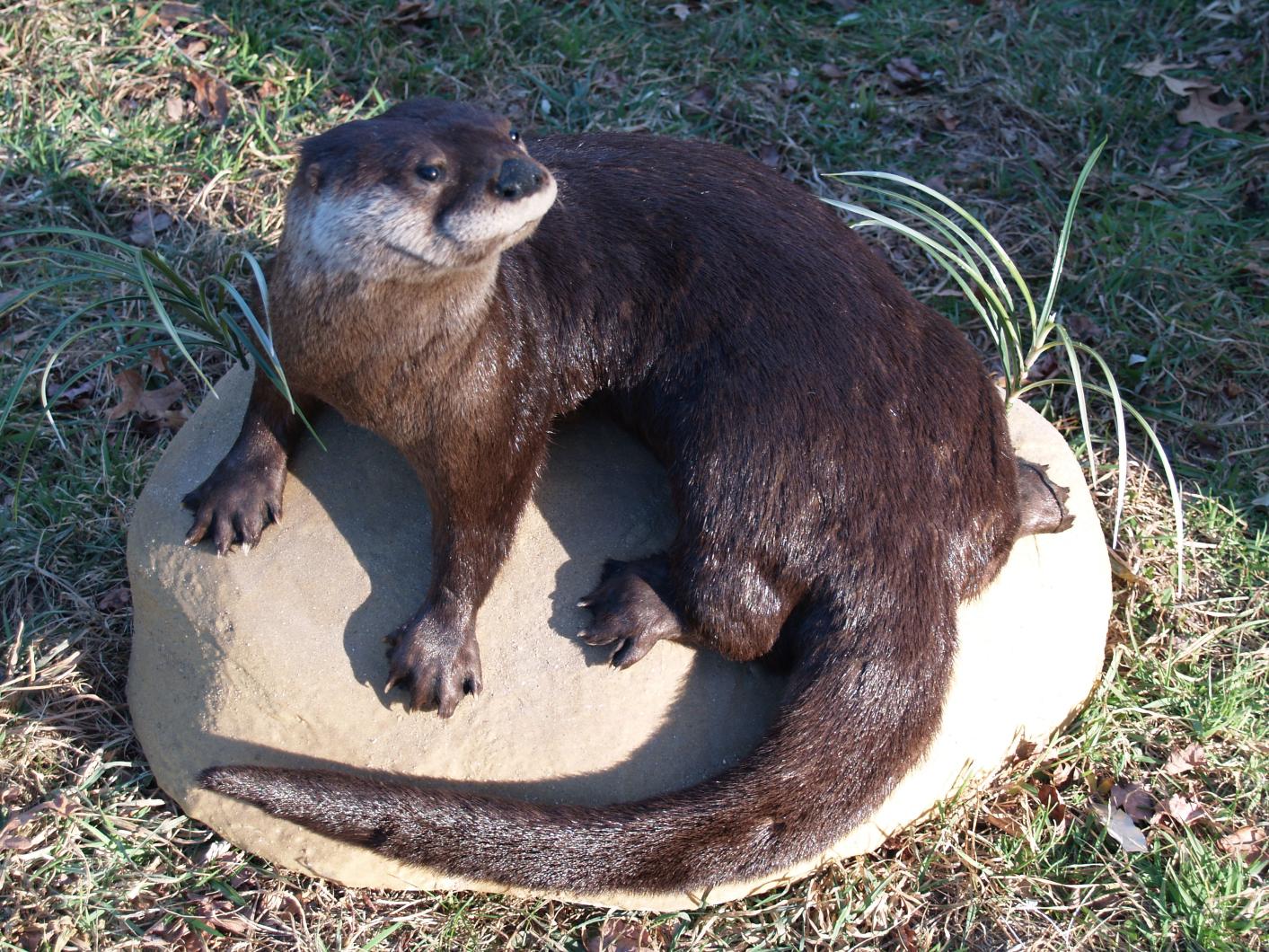This is what 118 people saw on Sunday afternoon’s Otter Walk: Three ducks, five dogs on leashes, a rusted tractor wheel and four folding chairs with broken seats.
This is what they did not see: otters.
Guided by wildlife biologists Luanne Johnson and Liz Baldwin, the largest turn-out of winter walkers in recent memory trudged through a mile and a half of trails, fields and bogs around the Wakeman Conservation Center searching for the elusive mammals, finding only their flat grassy slides into ponds, their lay-downs, and their distinctive detritus.
If there were any question that the Island’s native river otters are thriving, it was (unappetizingly) answered by the dozen fresh mounds of gooey green otter scat marking their paths through the woods.
“This mucous lines and protects their digestive system from the sharp-shelled creatures they eat,” said Ms. Johnson, sinking a stick into one of many piles of jellied otter poop.
It is a substance the two scientists have come to know well since embarking on a project last year to identify Vineyard otters’ habitats — from the cozy dens they carve into the shores of freshwater ponds and rivers to the icy slides they pack in the winter snows. They are a fun-loving species with a sturdy presence on the Island, according to the Vineyard Conservation Society, which hosted the weekend walk.
Because they require so many fish and crabs in their diet to maintain themselves — 10 to 15 per cent of their body weight per day, says Ms. Johnson — otters can’t spare the time to hibernate. Which is why their black, velvety pelts will be more visible in the barren, snow-covered landscape of winter as more of their habitats ice over.
Ms. Baldwin, who with Ms. Johnson is looking for funding to perform an Island otter census, has seen only a handful of otters up close during a year of field work. In the meantime, the scientists count the otters they see. And, when none turn up, as happened Sunday, they use a stuffed model.
“This otter is typical of what lives here,” said Ms. Johnson, introducing a 40 pound specimen, mounted on a fake rock. He was brought over from the mainland after being hit by a car.




Comments (1)
Comments
Comment policy »